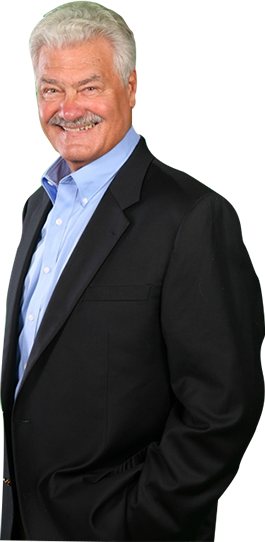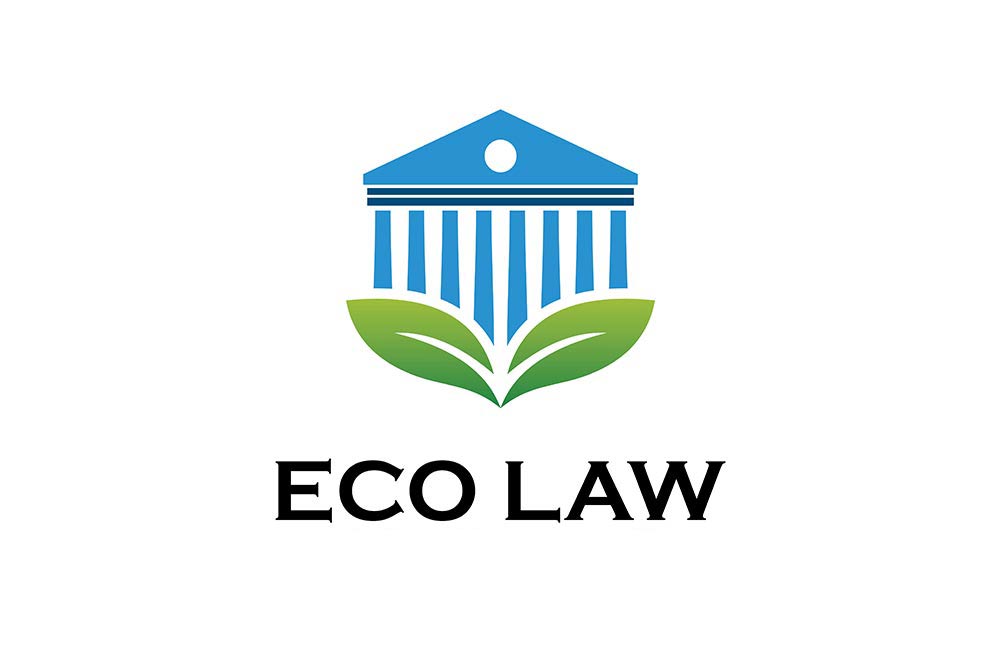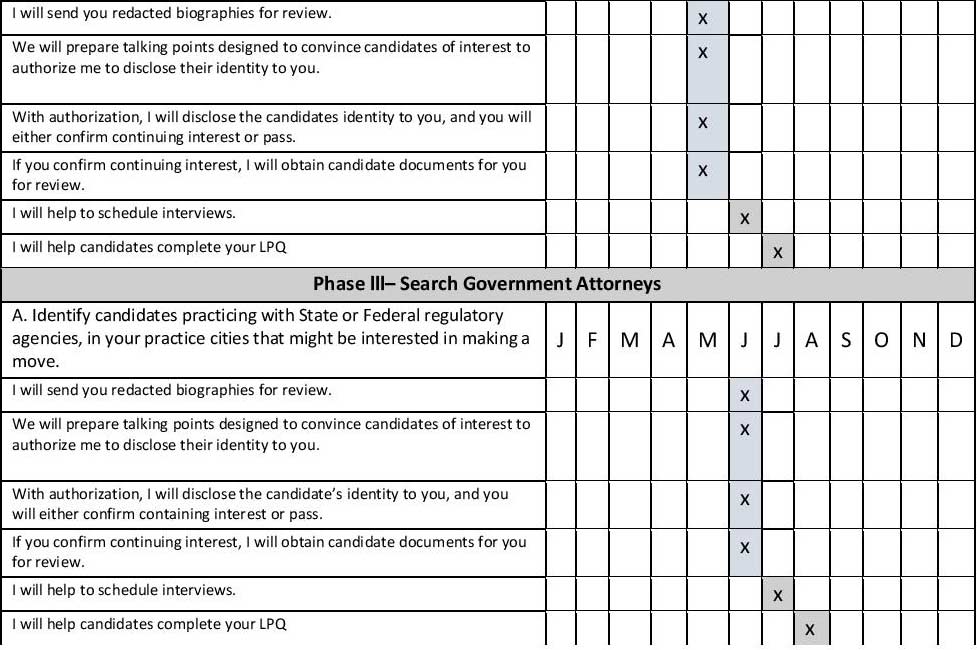Considering A Lateral Move?
Too Busy To Evaluate Opportunities?
I Can Help
in the news
COVID – 19 – Has adversely affected the recruiting business as it has every business worldwide. Many of my clients simply do not know what their numbers will look like for the rest of the year and have hit the “pause button” on lateral hiring. And those that have not, are being very selective and seeking partners with diverse environmental sub practice area skills in addition to a good book of business. But, on the positive side, many clients report that deals that had been in the pipeline when the virus hit are still moving forward; I am seeing a significant uptick in interest in “virtual” firm (remote) practice, and; 23 clients report that uncertainty resulting from the virus has “encouraged” many more senior partners to take the leap and retire early leaving room for new partners to “inherit” their business.
welcome
Hello, I am Peter Bibko, a retired environmental lawyer; former U.S. EPA Regional Administrator, and now a headhunter focusing exclusively on helping environmental and energy lawyers make lateral moves from one law firm to another nationwide. EHS Headhunter evolved from Common Counsel LLC, a firm that recruited all types of lawyers for more than 20 years. Simply stated, EHS Headhunter now guides environmental and energy lawyers through the lateral recruiting process and helps them avoid the obstacles often encountered along the way. Please let me know if you think it would make sense to start a conversation.


I understand environmental laws and regulations…
Having practiced as an environmental lawyer for 40 years:
I understand environmental statutes, and the “alphabet soup” of environmental regulations;
The subtle differences between the environmental skill sets that define the practice;
I speak the same language as the environmental practice group leaders, and the environmental lawyers that I serve;
I have practiced as a sole practitioner; with a very well-respected regional law firm, served as a U.S. EPA Region III Administrator, and;
I truly love the practice of environmental/energy law;

I Prepare Environmental Recruiting Plans for my law firm clients…
Over the years I have:
Worked with most Am Law 200 law firms, smaller regional firms and environmental boutiques;
Helped law firm clients develop and implement environmental partner/associate recruiting plans needed to replace retiring partners and add new skill sets to the practice group, and;
This has often allowed me to identify up-coming environmental needs early in the process before firm needs become public.

I know what kinds of environmental/energy lawyers Am Law 200 firms need…
I have a database that:
Lists environmental partners nearing retirement at all Am Law 200 firms nationwide;
Identifies offices of Am Law 200 firms that do not have sufficient environmental / energy lawyer capabilities;
Lists 500+ environmental and energy attorneys that I have worked with and/or placed in the past that can assist in identifying new environmental / energy lawyer needs at their firms at offices nationwide, and lastly;
I also subscribe to several commercial database services providing key practice metrics various metrics for all Am Law 200 law firms, and NJ 350 firms.

My candidates can anonymously explore law firm opportunities…
I offer environmental / energy lawyer candidates:
The ability to determine possible law firm interest via submittal of a “Redacted Profile” that accurately describes their qualifications and experience without divulging their identity;
When finalized his/her Redacted Profile may be provided to practice group leaders at firms of interest to anonymously “test the water” and confirm preliminary interest before divulging a lawyer’s identity, and;
If there is interest, we can often learn specifically “why” there is interest (i.e. replace retiring partner, new skill set, etc.); specifically, how the firm would propose to help the a new partner to grow his or her business, and exactly how the partner would be integrated into the firm.

I Know How To Close The Deal…
After working closely with a candidate for several months the last thing you want is for a “deal-killer” to surface just when you are about to close the deal.
The “art” of the deal lies in opening and closing the deal, without any “surprises” in between;
“Opening” occurs when I start talking with a candidate and ends when he/she reports to work at a new firm, and;
Over the past 20+ years I have learned where the “land mines” are; how to identify and tackle them, upfront, and; to minimize the chances of an unexpected surprise at closing.

Proposal
Step 1 Lets talk about your practice and decide if it makes sense to consider a lateral move; If so, I will identify clients likely to be interested in talking with you; prepare your “Redacted Profile” and submit your profile to firms that you are interested in.
Step 2 I will prepare a spreadsheet comparing practice metrics for firms interested in you; get additional information that you need to confirm your continuing interest, and; disclose your identity to firms when you tell me to.
Step 3 I will schedule an introductory breakfast or lunch with firms ready to move forward; additional meetings as needed and for environmental / energy partners, and; assist you in completing and submit firm Lateral Partner Questionnaires.

Credentials
Academics:
B S. Biology, Louisiana State University.
Graduate Studies, Marine Biology, Gulf Coast Research Laboratories, Ocean Springs, Mississippi.
M.S. Environmental Health Engineering, New York University.
J.D. Duquesne University, School of Law, Pittsburgh, Pennsylvania.
Experience:
Research Assistant, National Marine Fishery Service, Ocean Springs, Mississippi (National Science Foundation Fellowship).
Research Associate, Boyce Thompson Institute for Plant Research, Yonkers, New York.
Research Associate, Lamont- Dougherty Geological Observatory (Columbia University), Dobbs Ferry, New York.
General Counsel, Chemfix Technologies Inc., Kenner, Louisiana.
Environmental Counsel, Adams & Reese, Baton Rouge, Louisiana.
Director Environmental Affairs, Kaiser Aluminum & Chemical Corporation, Gramercy, Louisiana.
Region III Administrator, Environmental Protection Agency, Philadelphia, Pennsylvania.
Adjunct Professor Environmental Health, Tulane University, School of Public Health, New Orleans, Louisiana.
Attorney Recruiter, Special Counsel, Inc, New Orleans Louisiana.

My Clients
I have earned the trust and respect of law firm clients by doing what I promise to do. I have made many friends and now regularly add new clients by referral, for example:
About 2 years ago, I started working with one of most respected U.S. environmental boutiques in the U.S. that rarely uses outside recruiters. The firm’s environmental manager enlisted my services based on a recommendation from a partner that I had placed at the firm in 2014.
Last year, my services were retained by an Am Law 50 firm to help re-vitalize the firm’s environmental capabilities at its Washington DC office. I was recommended by the firm’s V.P. Talent & Growth, who had formerly worked as a recruiter at the largest lawyer search firm in the country. His search firm maintained a database ranking its top competitors in various practice areas in different markets – and I am proud to say that I had been listed as the firms’ number 1 competitor in the area of environmental partner recruiting.

Big Law Firms
I spend about 75% of my time recruiting for my “big law” clients.
Most want the same thing – partners with books of business sufficient to increase overall firm revenues without reducing revenues per lawyer.
Over the past few years their interest has clearly shifted from partners with CAA, CWA, RCRA, etc. permitting and enforcement experience to those practicing at the intersection of environmental and traditional oil and gas energy and renewable energy practice.
Representative big law clients include: Adams and Reese-Akerman Senterfitt-Akin Gump-Allen Matkins-Alston & Bird-Arent Fox-Armstrong Teasdale-Arnold & Porter-Baker & Hostetler-Baker Botts-Baker, Donelson-Ballard Spahr-Barnes & Thornburg-Blank Rome-Bracewell-Brownstein Hyatt-Bryan Cave-Buchanan Ingersoll-Carlton Fields-Cooley-Covington & Burling-Cozen O’Connor-Crowell & Moring-Davis Wright-Day Pitney-Dechert-Dickinson Wright-Dinsmore & Shohl-DLA Piper-Dorsey & Whitney-Drinker
Biddle-Duane Morris-Dykema Gossett-Epstein-Faegre Baker-Fisher & Phillips-Foley & Lardner-Gardere Wynne-Gibbons-Gibson, Dunn-Goodwin Procter-Gordon & Rees-Goulston-Greenberg Traurig-Haynes and Boone-Hogan Lovells-Holland & Hart-Holland & Knight-Hunton & Williams-Husch Blackwell-Ice Miller-Jackson Lewis-Jackson Walker-Jenner & Block-Jones Day-K&L Gates-Katten Muchin-Kelley Drye-Kilpatrick Townsend-King & Spalding-Kirkland & Ellis-Latham & Watkins-Lathrop & Gage-LeClair Ryan-Locke Lord-Lowenstein Sandler-Manatt, Phelps & Phillips-Mayer Brown-McCarter & English-McDermott Will-McGuireWoods-Michael Best-Miller Canfield-Mintz, Levin-Morgan, Lewis-Morrison & Foerster-Nelson Mullins-Nixon Peabody-Norton Rose-Ogletree, Deakins-O’Melveny & Myers-Orrick Herrington-Squire Patton-Paul Hastings-Paul, Weiss-Pepper Hamilton-Perkins Coie-Phelps Dunbar-Polsinelli-Quarles & Brady-Reed Smith-Roetzel & Andress-Ropes & Gray-Saul Ewing-Seyfarth Shaw-Sheppard Mullin-Sidley Austin-Skadden, Arps-Snell & Wilmer-SNR Denton-Steptoe & Johnson-Stoel Rives-Stroock & Stroock-Sullivan & Cromwell-Sutherland Asbill-Thompson & Knight-Thompson Hine-Troutman Sanders-Vedder Price-Venable-Vinson & Elkins-Weil Gotshal-White & Case-Wiley Rein-Williams Mullen-Wilmer Hale-Wilson Sonsini-Winstead-Winston & Strawn-Womble Carlyle.

Environmental Boutiques
I spend about 20% of my time working for environmental boutique clients…
My environmental boutique clients focus their practices on environmental, health, safety, and more recently include traditional and renewable energy practices as well.
They are practicing in 23 different states and range in size from range in size a 2-lawyer firm in Chicago to arguably the largest U.S. boutique with offices located throughout the United States and internationally.
As with many other practice areas, the smaller the firm the greater the need for partners with more diverse environmental skill sets, and conversely the larger the firm the greater the chances needing partners with highly specialized practices.

Virtual Law Firms
I spend about 10% of my time recruiting for the top 5 U.S. “virtual” law firms ranging in size from about 70 to over 200 lawyers.
Thanks to Covid 19, most big law environmental partners have gotten an unexpected taste of what it might be like to work in a “virtual” firm by working at home over the last few months.
Virtual firms are not for everyone, but are growing in popularity among certain groups of lawyers – in particular: “Service Partners” with minimal, but significant annual originations and “Income Partners” that want to hold onto more of their originations, as well as female lawyers trying to balance a busy practice with family life, and; Older attorneys facing mandatory retirement requirements.
Candidates are usually required to have practiced at an Am Law 200 law firm at some point in their careers;
Have top notch academic credentials, and about $300K to $500K, in annual originations;
“Members” can work remotely, set their own hourly rates, and hold onto up to about 70% to 90% of their originations;
In general, Members earn about 45% on referral matters that they work on for other Members, and about 35% on matters that they refer to other Members;
Some virtual firms maintain small “meeting offices” in major cities, while one does not;
One firm limits membership to lawyers practicing in States in which small “offices” are maintained;
Two firms keep Senior Counsel level and associates on staff for use by Members for an additional fee, and;
One firm allows Members to share in equity ownership, while the other four do not.

RESULTS
AIR
PITTSBURGH – Moved CAA enforcement partner:
With $750K book, from big law to regional firm;
Offer accepted 5 months after submittal of Redacted Profile.
WASHINGTON DC – Moved CAA permitting/litigation partner:
$1.7M book, from one Am Law 100 firm to anotheri;
Offer accepted 9 months after submittal of Redacted Profile.
SEATTLE – Moved CAA /litigation junior partner:
$1.1M book to firm allowing partial remote practice;
Offer accepted 4 months after submittal of Redacted Profile.

WATER
BALTIMORE – Moved CWA/regulatory partner:
With $450 book, from smaller firm to environmental boutique;
Offer accepted 4 months after submittal of Redacted Profile.
SACRAMENTO – Moved relocating CWA associate:
With a solid business plan from small NJ firm to small Sacramento firm;
Offer accepted 2.5 months after submittal of Redacted Profile.
BOSTON – Moved CWA/waste counsel:
With solid business plan from mid-sized to regional law firm;
Offer accepted 3.5 months after submittal of Redacted Profile.

WASTE
LOUISIANA – Moved two traditional environmental partner group:
With $1.2M book/prior state regulatory agency experience;
Offer accepted 6 months after submittal of Redacted Profile.
HOUSTON – Moved RCRA/CERCLA/ senior associate:
With $200 book/business plan from smaller to big law firm;
Offer accepted 4 months after submittal of Redacted Profile.
CHICAGO – Moved senior (“retired”) CERCLA/TT litigation partner:
With $1.5M book (relocating home) to good regional firm;
Offer accepted 4 months after submittal of Redacted Profile.

CERCLA
ROSSLYN, VA–Moved CERCLA/Hazardous substance release litigator:
$1.8M book; From Miami firm to Roslyn VA firm;
Offer accepted 14 months after submittal Redacted Profile.
NORTH CAROLINA – Moved CERCLA litigator counsel lawyer:
Minimal book/good business plan; to firm allowing remote work
Offer accepted 5 months after submittal of Redacted Profile.
CHICAGO – Moved CERCLA/Brownfields partner:
$2.4M book; Relocate/Chicago to DC /Am Law 50 firm;
Offer accepted 7 months after submittal of Redacted Profile.

DUE DILIGENCE/M&A
LOS ANGELES – Moved transactional/due diligence partner:
$2.7M+ book; replace retiring lawyer at Am Law 200 law firm
Offer accepted 3 months after submittal of Redacted Profile.
WASHINGTON DC – Moved 10th year DD senior associate:
With good business plan to international Am Law 25 law firm;
Offer accepted 3 months after submittal of Redacted Profile.
LOS ANGELES – Moved “Magic Circle” NEPA / due diligence counsel;
Good business plan/from top NYC firm to smaller Am Law 200 firm;
Offer accepted 3 months after submittal of Redacted Profile.

SAFETY
DENVER/WASHINGTON DC – Moved 7 lawyer EH&S Group:
$12+M book; to firm allowing variable rates;
Moved 13 months after submittal Redacted Profiles.
WASHINGTON DC – Moved mid-level OSHA associate:
From large national firm to a mid-sized regional firm;
Offer made and accepted 4 months after submittal of Redacted Profile.
WASHINGTON DC – Moved 5th year counsel:
No book/but good business plan/Relocate Ohio to DC;
Offer accepted 2.5 months after submittal of Redacted Profile.

FOSSIL ENERGY
MEMPHIS – Moved Fossil Transact/Env. partner:
$1.3M book/from NYC with int. firm to Memphis office reg.firm;
375K offer accepted 3 months after submittal of Redacted Profile.
HOUSTON – Moved an environmental/oil & gas litigator:
$950K book/From large Texas firm to top 5 U.S. “virtual” firm;
Offer accepted 7 months after submittal of Redacted Profile.
DALLAS – Moved an O&G trans. counsel level attorney:
No book/solid business plan;
Offer accepted 5 months after submittal of Redacted Profile.

RENEWABLE ENERGY
PHOENIX – Moved renewable energy env. partner:
$1.6M book/needing DC FERC support;
Offer accepted 3 months after submittal of Redacted Profile.
NEW YORK CITY – Moved Renewable energy/env.:
$1.5M book/From Am Law 100 to virtual firm; Offer made and accepted 3 months after submittal of Redacted Profile.
NEW YORK CITY – Moved Renewable energy/env./ wind partner:
$1.5M book/from AmLaw 200 firm to NYC boutique;
Offer accepted 3 months after submittal of Redacted Profile.

WHITE COLLAR
WASHINGTON DC – Moved white collar/AUSA partner;
No book; but great business plan from DOJ to top Am Law;
Offer accepted 13 months after submittal of Redacted Profile.

LAND USE
MIAMI – Moved land use/real estate/finance partner;
$800K book; from Am Law 200 firm to “virtual” firm;
Offer made and accepted 3 months after submittal of Redacted Profile.
SAN FRANCISCO – Moved junior regulatory/zoning partner;
$500K book and solid business plan/Am Law 200 firm to boutique;
Offer accepted 5 months after submittal of Redacted Profile.
SEATTLE – Moved junior land use/wetlands/NEPA partner;
$1.1M book one Am Law to another;
Offer made and accepted 5 months after submittal of Redacted Profile.
About EHS Head Hunter
How long have you been working in the environmental area?
I have been involved in the environmental legal/regulatory business, as an environmental consultant, environmental lawyer, and environmental regulator since 1969.
Why did you go into recruiting?
I “retired” in 2010, after a long environmental career, but quickly realized that I missed environmental law too much. I wanted to somehow stay involved in the practice and found that recruiting environmental partners filled the void. We have recruiting agreements in place with most Am Law 200 law firms and have earned the trust and respect of environmental practice group leaders, and recruiting managers, nationwide. We also maintain various recruiting databases including a lateral move database.
As a one-man shop, how can you get everything done?
Two ways. I select the law firm clients and candidates that I work with very carefully. I work with partner level candidates exclusively and lead efforts of contract lawyers to work with associates and counsel level lawyers.
What makes EHS Headhunter “better” than the competition?
We save them a lot of time because we fully understand exactly what kind of partners they are looking for and eliminate and don’t present candidates that don’t match their needs. Of course, it also saves busy candidates a lot of time.
Won’t most large law firms contract with any recruiter, promising an environmental partner with portables, whether or not the recruiter has any environmental experience?
Absolutely. Money is money. That said however, it’s rare that opportunistic hiring can be relied on to produce a candidate with the specific skill sets, rate structure and client mix needed by clients precisely when the partner is needed.
Aside from having an environmental background, to what do you attribute Common Counsel’s success in recruiting environmental partners?
Strange as it might sound, probably because we choose our clients very carefully. Looking back over the last 20 years, Common Counsel has been most successful in moving lateral environmental partners into firms that take time to work with nus to develop th well thought out environmental partner recruiting plans that describe not only the kinds of environmental partners that they are looking for, but also stat, specifically why a new partner candidate would benefit by making a lateral move, and precisely how the firm plans to make that happen.
Fees & Searches
Who pays your fees?
Our law firm clients pay 100% of our fees. Partners that we work pay nothing. Truth be told, our clients are very happy to pay us for the opportunity to talk with partners with portable business.
How much are you paid by your law firm clients for moving me to their firm?
A lot but believe me we deserve it. The fees that Common Counsel receives from law firm clients is confidential information and cannot be disclosed without prior approval of our clients. However, that said, it is well known and widely reported on the Internet, that most lawyer recruiting contracts or “fee agreements” pay outside recruiters a fee of about 25%, payable over varying periods of time but subject to a requirement that the recruiter refund a portion of the fee if a candidate leaves the firm voluntarily nor otherwise within a stated period of time. Also, most of our assignments are under a non-exclusive contingency contract which means that may work with a candidate for months or in some cases years and receive nothing unless the client hires the candidate.
Do you perform “exclusive” or “non-exclusive” searches for your clients?
Both. About 30% of our searches are “exclusive” for a period of 90 days, after which another recruiter can be brought in by the client if we have not been able to perform to the client’s satisfaction. Our clients have chosen to go with another recruiter/headhunter only twice in the past 20+ years.
Why don’t you always work on an exclusive basis?
Two reasons. First because it’s hard to obtain exclusive agreements. Second, it’s not always clear and in any case awkward to ask an “exclusive” contracted client if you can “sell” one of their rejected candidates to their biggest competitor across town.
How much of your business involves finding new environmental partners to replace retiring partners?
Between 15% to20% in any given year.
How much help has your Am Law 200 succession database been in helping you to place new environmental partners?
Extremely helpful. It has allowed us to quickly identify target firms likely to need to replace a retiring partner; compare a candidate’s qualifications, experience and sub practice skill set with the client’s needs and determine candidate interest.
If I choose to work with you, and a client is interested in talking with me about replacing a retiring partner, can you find out how much business the retiring lawyer has and what type of business?
Absolutely. It’s extremely difficult to get that kind of information before submitting a Redacted Profile, but clients that are really interested in moving forward after reviewing a profile are almost always willing to share that information in order to entice the candidate to continue to move forward.
Conflicts & Integration
How do you avoid conflicts when searching for environmental partners that are probably of interest to all of your law firm clients?
Three ways – First, our small size, and limited client base actually reduces the potential for client conflicts and lets us approach far more potential partner candidates practicing in firms that are not a clients of Common Counsel; Second, we let the partner candidates that we work with decide the firm(s) that they want to talk with, and; Third, our business model allows us to further minimize conflicts by allowing clients the option of choosing a non-exclusive contingency search, or an exclusive “retingency”(blended) search, limited to a specific legal market area or city.
What is the biggest problem you face in working with clients looking to bring new partners into their firms?
Without any doubt getting the client to take the time needed to develop a clear partner integration plan explaining exactly how and why a candidate should expect to find greener pastures at their firm. When you try to convince an accomplished partner to consider your client, you obviously need to give them unvarnished facts showing them why. That said, we do not have any problems convincing our “better “clients to play by our “rules” and provide us with this information to share with our clients. And if not, quite frankly, they will no longer be our clients.
How can I be sure that one of your clients’ wont promise to properly integrate me into the firm after joining, and then renege on the promise?
Short answer, you can’t. But since we stop receiving periodic commission periodic payments if you leave the firm (voluntarily or otherwise) our interests are clearly aligned, and we will do absolutely everything that we can to make sure you are happy.
Do all of your clients have formal integration plans, and if so at what stage in the recruiting process should I have a chance to review a plan?
Only about 15% of our clients have what we consider to be “good” integration plans, meaning those that tell a prospective candidate not just what he/she might expect upon joining the firm (i.e.., dramatically increase your book of business) but also an most important, exactly what would they do to make it happen.
Traditional Firm Business Models
Do your clients have a “transparent” partner compensation structure, where every partner knows the compensation of all other partners?
Yes and no. About 25% of our clients have fully transparent compensation systems, and 75% do not. Those that do not, tend to rely on offering above-average compensation packages to attract new partners.
Can you compare your clients practice metrics with my current firm’s metrics?
Yes. we subscribe to several law firm ranking/information services providers that track Am Law 200 firm metrics annually, including for example: “revenue per lawyer”, ‘profits per equity partner”, and “% firm profits”, to name a few. Environmental partners frequently ask us to provide them with a comparison of key metrics of for client firms that are interested in talking with them and their current firm.
If I were to make a move to a new firm, would the firm give me credit if I were to originate new business from a current client of the firm?
Maybe. About 25% of our clients provide full credit for new originations from a current client of their firm that is 100% attributable to the new partners efforts and it is clear that the business would not have come in absent the efforts of the new partner. Other, maybe 50% of our clients allow for a splitting of credit between the lawyer that first brought the client into the firm and the new partner joining the firm, and about 25% of our clients would not give the new partner any credit.
Do you have clients with multiple “partner levels?
Yes. By far, most have “income or profit partners” and “equity partners”, but others have 2 levels of income partners. Some only have equity partners.
Do environmental lawyers who are equity partners at their firm come into a new firm as equity partners?
Probably not. The vast majority of firms bring new partners in as income partners or contract partners, but include them as “partners”, so that nobody knows whether they are equity or income partners.
Can you estimate what my compensation would have been if I had joined a client’s firm last year or the year before?
Maybe, especially for firms with transparent compensation systems, we are often to get an estimate without divulging your identity.
Can an environmental partner enjoy a big law compensation level in a smaller environmental boutique offering a better work/life balance?
Probably not, but the amount of lost compensation really depends on the firm that the partner came from and is going to.
Conflicts
Is it possible to clear conflicts early on in the process before completing a firm Lateral Partner Questionnaire?
Absolutely, and Common Counsel strongly recommends that its clients perform a preliminary conflicts, after the client determines serious interest in a partner candidate, but before a long drawn out Lateral Partner Questionnaire (“LPQ”) is completed. Despite every attempt to streamline and expedite the process, on average, it takes between 3-6 weeks for a candidate to complete and finalize his/her LPQ and might be eliminated from consideration due to conflict at that time. The “preliminary conflicts check” is designed to eliminate conflicts early well before a candidate must his/her LPQ.
How long does take to move from one firm to another?
For solo partners on average from about 2 to 6 months, and for groups from about 5 to 22 months.
What “kinds” of environmental partners are your “traditional” law firm clients looking for?
Most of our traditional law firm clients are looking to replace environmental partners that are retiring and bring in new partners with specialized knowledge needed to bolster specific sub-practice capabilities wanted by major clients. During the last 2-years we have seen a significant uptick in client need for partners practicing at the intersection of energy (renewable and traditional) and environmental law, and in particular those with strong NEPA and permitting experience, ideally as a member of the firm’s project management team.
Do lawyers who are equity partners in their current firm make the lateral move to new firms as equity partners?
Usually not. Most move into a new firm as “contract” or “income partners for a 1- or 2-year period before being considered for equity status. But there is no hard and fast, and there have been exceptions, especially with partners with very significant portable business.
Virtual Law Firm Business Models
What virtual firm clients do you represent?
We represent the top 5 “virtual” law firms in the U.S., or those employing a new “alternative business model” as they like to be called that dramatically reduce overhead costs; allow “Members” to work remotely; to retain about 70%-80% of their originations, (rather than 35% to 40% offered by most traditional brick and mortar firms); offer lower rates to key clients, and; accurately predict the 35% to 45% compensation owing to them from referral work at years-end.
What kind of cross-selling or referral revenues could I expect at a virtual firm?
Really depends on the firm and its clients and your particular practice and sub practice and skill-set expertise. Understandably, no firm wants to absolutely commit to a number, but all suggest that a significant portion of the average Members revenue comes from cross-selling and referrals, usually around .50% to 60%.
What kind of candidates are your “virtual” firm clients looking for?
Virtually any partner with $300K to $500+K with very steady originations. They generally “target” partners concerned about losing clients because of higher and higher rates required by their firm; those that want to work remotely from home in order to help raise a family, or; those that are having trouble growing their originations and need to hold onto a higher percentage of originations.
Do all/most virtual firms employ similar business models, and are there are significant differences between models?
Many important differences that must be understood and considered by a potential lawyer candidate when evaluating career opportunities. For example, whether or not the firm; allows equity participation; provides “meeting offices” in different practice cities, and; has Counsel level lawyers on-staff for use by Members, to name a few.
Are there “equity partners” in virtual firms?
Yes – but only at one, which offers 5 different levels of equity partner participation keyed to the amount of your annual originations. The rest do not offer equity participation.
Why do virtual firms look for about $500K+ in originations and not $1M-$2M+ like most traditional firms in major markets?
Because, if you have a $500K book, and pay them 30% (amount varies depending on gross originations) or $150K, you can probably live OK on $350, as compared to the $165K to $200K you might bring home at a traditional firm.




Comparison Your Firm & Other Interested Firms |
|||||||||||||
| Firm Name | Gross Revenue (millons) | 2013 Rank By RPL (FY:2012) | Number U.S. Offices | DC & Denver Office | Number of Lawyers | Number of IP Lawyers | Number Safety Lawyers | Net Operating Income (millions) | Profit Margin (%) | Number of Equity Partners | Profits Per Equity Partner | Compensation Average, All Partners | CAP divided by number of Lawyers (VPL) (FY:2012) |
| Your Firm | $282 | 163 | 17 | Yes | 514 | 77 | 12 | $89 | 31 | 140 | $630,000 | $430,000 | $265,000 |
| Firm A | $598 | 124 | 22 | Yes | 926 | 129 | 16 | $164 | 27 | 173 | $950,000 | $570,000 | $320,000 |
| Firm B | $352 | 173 | 56 | Yes | 690 | 0 | 29 | $124 | 35 | 206 | $605,000 | $455,000 | $245,000 |
| Firm C | $406 | 89 | 18 | Yes | 552 | 379 | 5 | $137 | 34 | 160 | $860,000 | $670,000 | $315,000 |
Redacted Profile EHS Headhunter Washington DC Environmental Partner Candidate EHR 22154
Environmental Partner Candidate EHR 22154
Overall JD/LLM/MBA – all top schools and top grades; admitted in several states including DC and Virginia; Lots of publications and presentations; Has about 20 years’ experience litigating environmental matters, with an emphasis on CERCLA release law and environmental issues arising from the release of hazardous substances due, in many cases to transportation (rail & water) related incidents/emergencies. Expert CERCLA reporting requirements; Some EPCRA experience. Some environmental white-collar experience. Formerly served as a criminal prosecutor, regional counsel to a federal agency with environmental responsibilities, as well as lead counsel in litigation on behalf of his ALR top 100 firm’s clients.
Portables/Conflict Has a steady $2-3MM/year in mixed litigation/counselling business, (about 60%/40% respectively) 95% of which the lawyer believes to be portable. Business was down to about $1.8M about 4 years ago due to settlement of a major piece of litigation. Counselling business is weighted toward CAA enforcement representation at EPA HQ administrative level and DOJ white collar environmental matters. Clients include major traditional O&G; oil, commercial/industrial real estate, chemical refining entities, and some representation of state regulatory agency on narrow short-term litigation matter involving mid-sized petroleum distributor.
Needs Currently practices with solid Am Law 75 firm in office far from DC. Wants to relocate to DC initially prompted consideration of a move to better serve certain national clients out of DC and to be closer to grown children that have permanently relocated to DC (son working for congressman on Hill; son starting Harvard, and daughter working in NYC); Could easily join DC office of present firm, but wants to consider options for better growing practice before doing so. Needs more Associate help than he has at present, and firm that may generate more cross-sell in transportation related environmental litigation.
Status – I just started working with this lawyer about 2 months ago. I introduced the lawyer to a client looking to add/enhance its white-collar capability in its DC office. Went to very successful initial meeting stage, and I had the candidate complete my “Preliminary LPQ” which disclosed name of the mid-sized petroleum distributor, which turned out to be smaller subsidiary of a direct competitor of a major client of the Am Law 50 firm. The lawyer recently approved my submittal to you for confidential consideration. Please let me know if it might make sense to talk further at this time.




